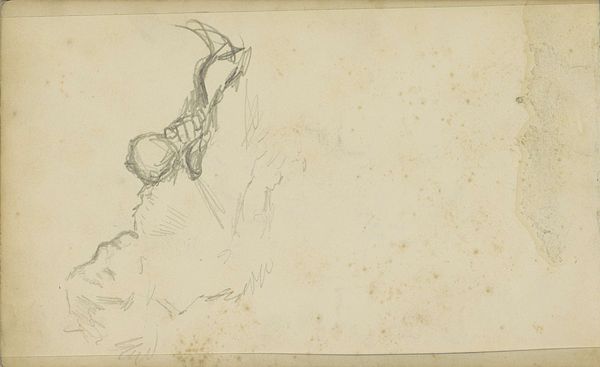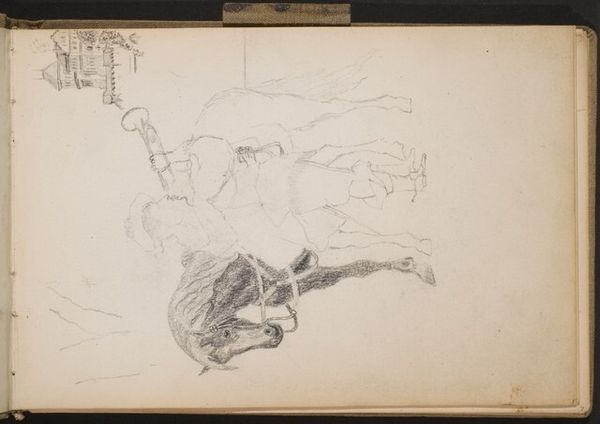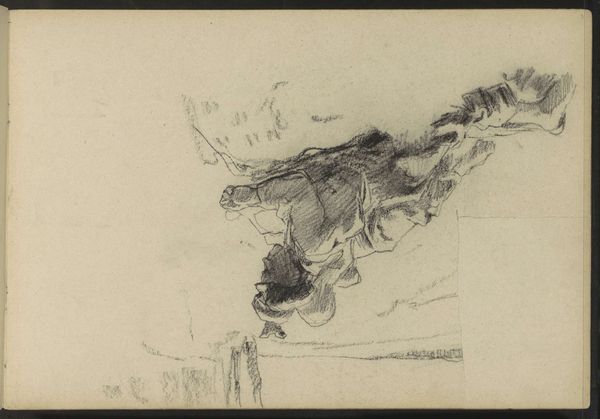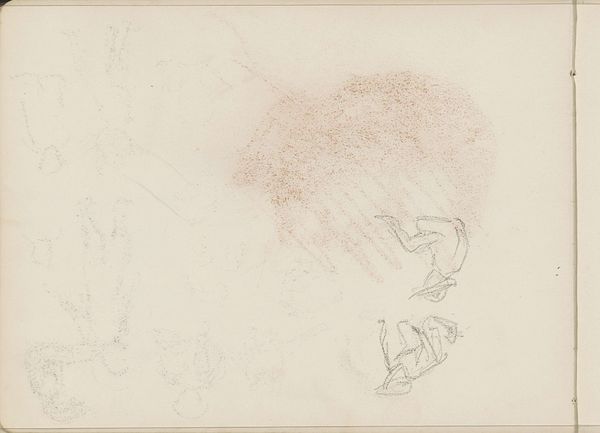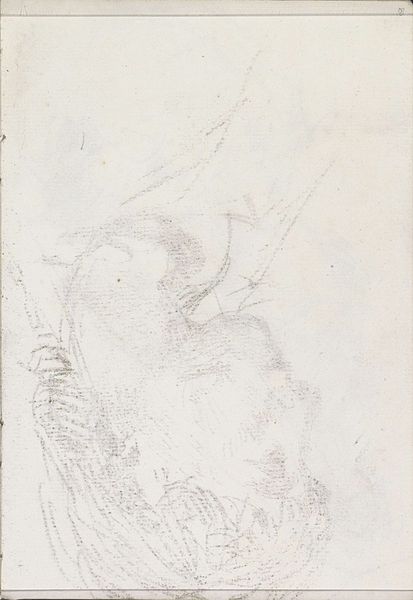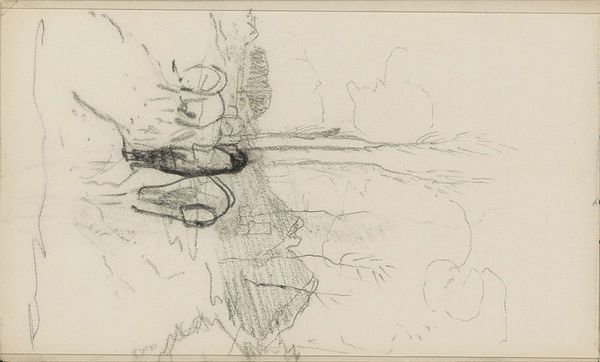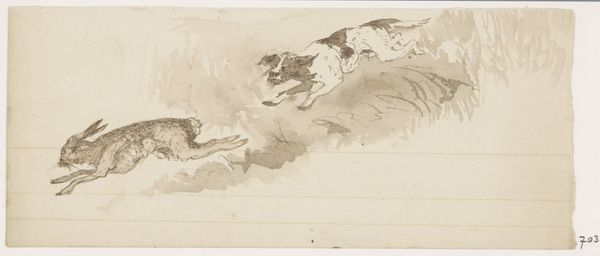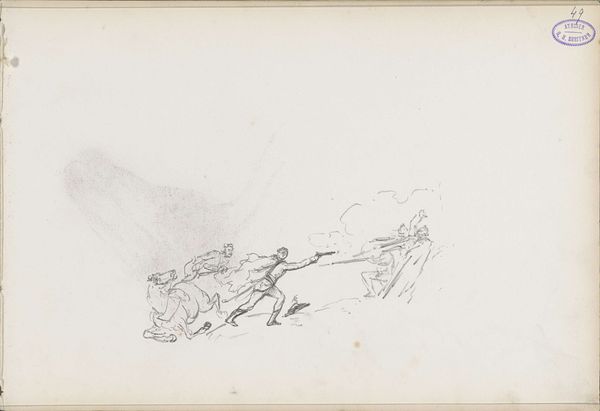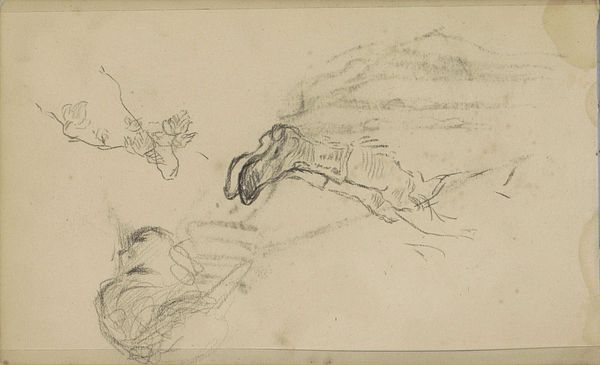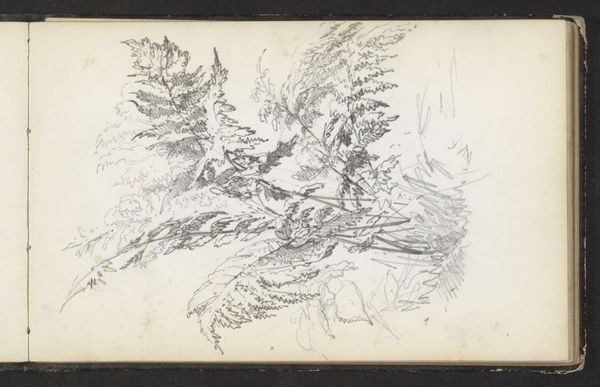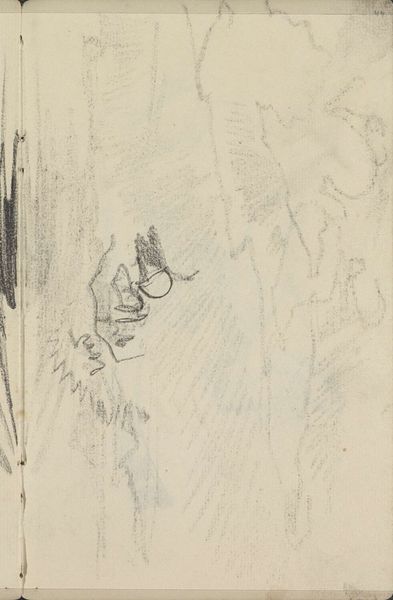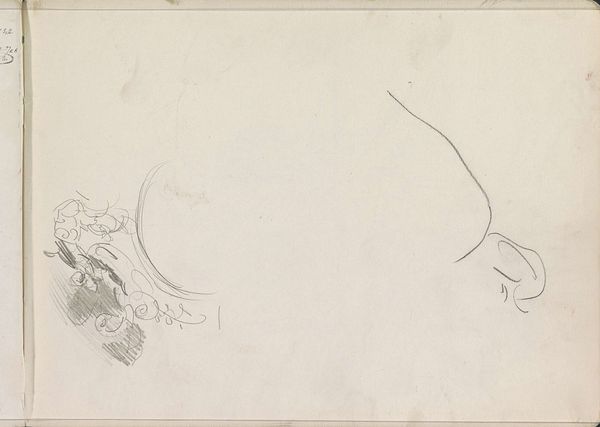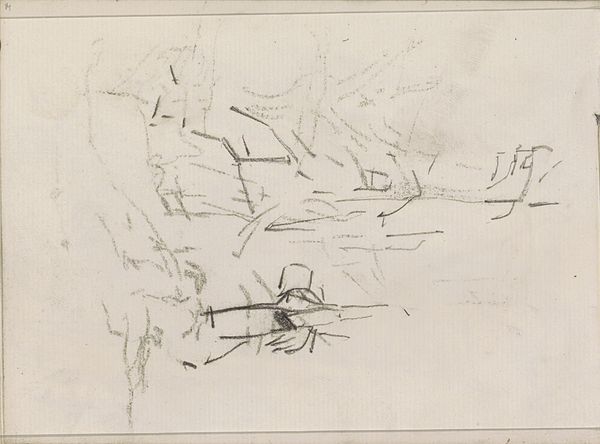
drawing, ink, pencil
#
drawing
#
figuration
#
form
#
ink
#
geometric
#
pencil
#
line
Dimensions: 12 3/4 x 15 in. (32.39 x 38.1 cm) (sheet)
Copyright: No Copyright - United States
Editor: Here we have Joseph Pennell's "Gargoyle-Finial-Torch-holder," created around 1883. It's a drawing made with ink and pencil. I’m immediately struck by how the gothic details and use of line create a kind of dark, whimsical feeling. What do you see in this piece? Curator: It's tempting to see simple fantasy, but let's contextualize. Pennell was working during a period of intense industrialization. The grotesque, the gargoyle… these are powerful symbols co-opted from medieval cathedrals, now perched atop buildings financed by new, often exploitative wealth. What could that jarring juxtaposition be communicating about anxieties of class and social structures during the Gilded Age? Editor: So, instead of just decoration, the gargoyle is kind of a critique? Like the old world looking down on the new? Curator: Precisely. And look closely at its placement. Perched high up, suggesting a protective stance. But who, or what, is it really protecting? The wealthy elite? Or is its exaggerated, almost comical form meant to undermine their power, satirizing the excesses of the era? Where do we see echoes of these conflicts and power structures in our society today? Editor: I never thought about gargoyles in terms of social commentary! Seeing it as a reaction to industrialization makes so much more sense than just a spooky decoration. I wonder, would people at the time have seen it that way? Curator: Undoubtedly, but perspectives would have differed based on social standing. These images served as a form of visual debate, and one wonders whether these elites recognized these power dynamics embedded into the architectural structures that held up society at the time. These visual tensions remind us that our environment actively reflects—and reinforces—inequality, and calls on us to examine and disrupt these dynamics wherever they arise.
Comments
No comments
Be the first to comment and join the conversation on the ultimate creative platform.
